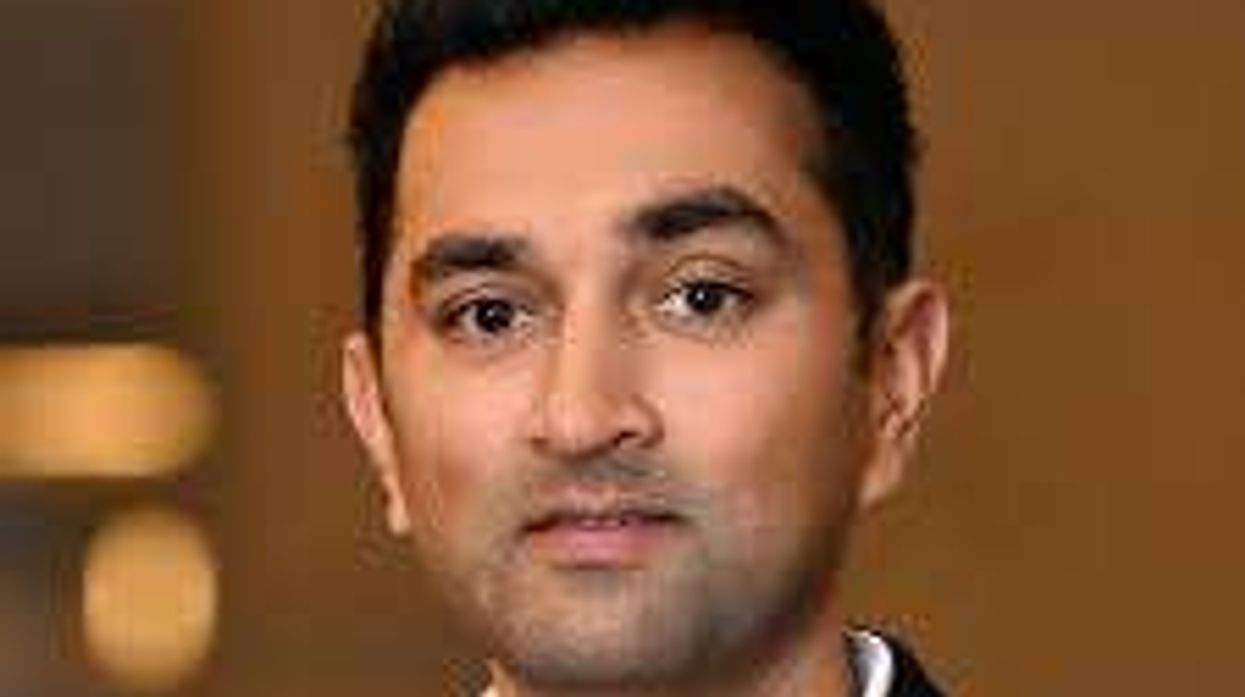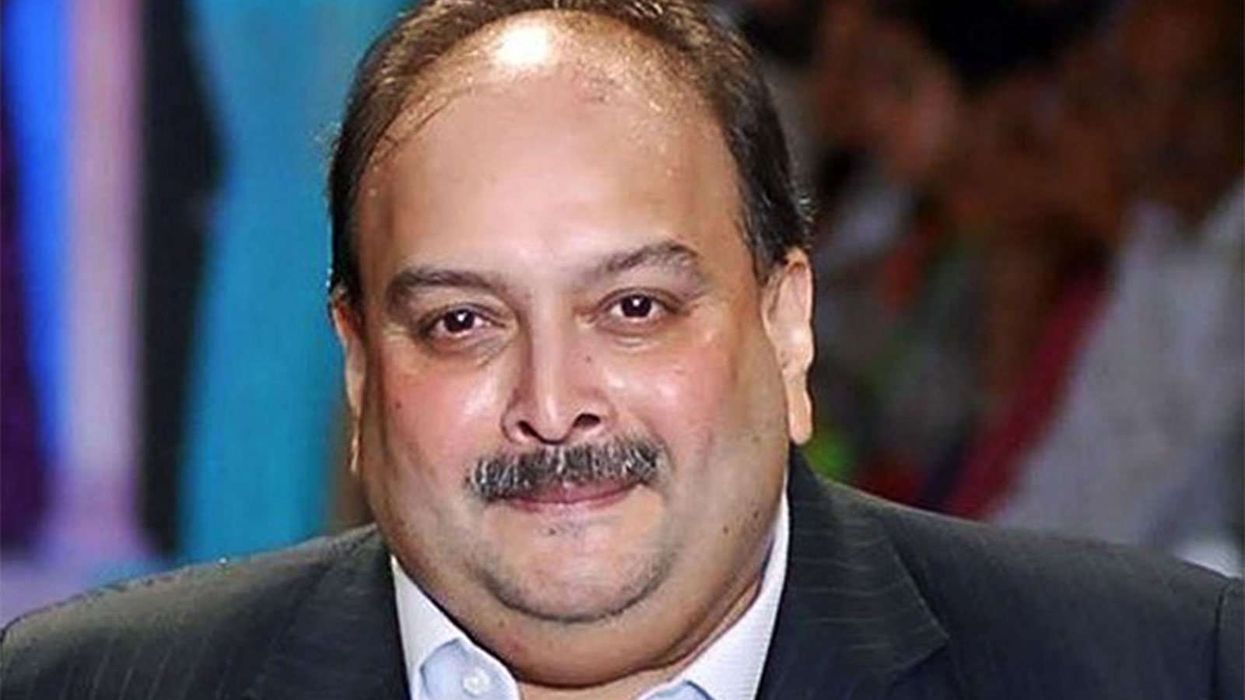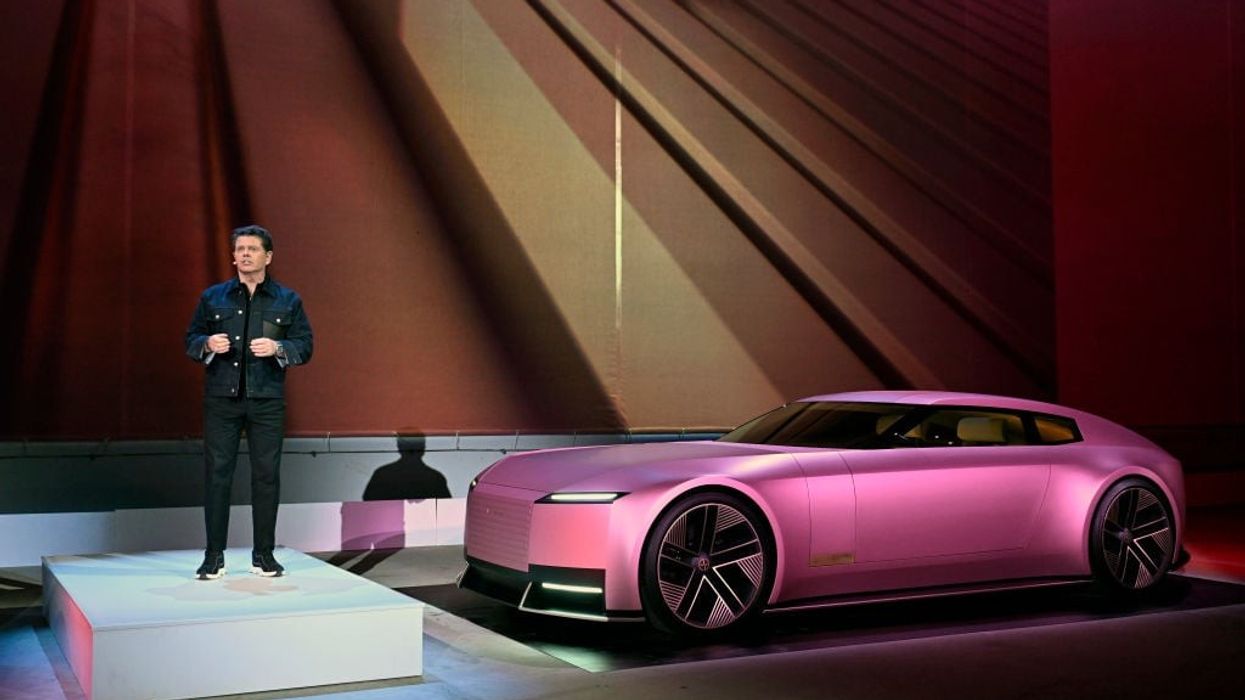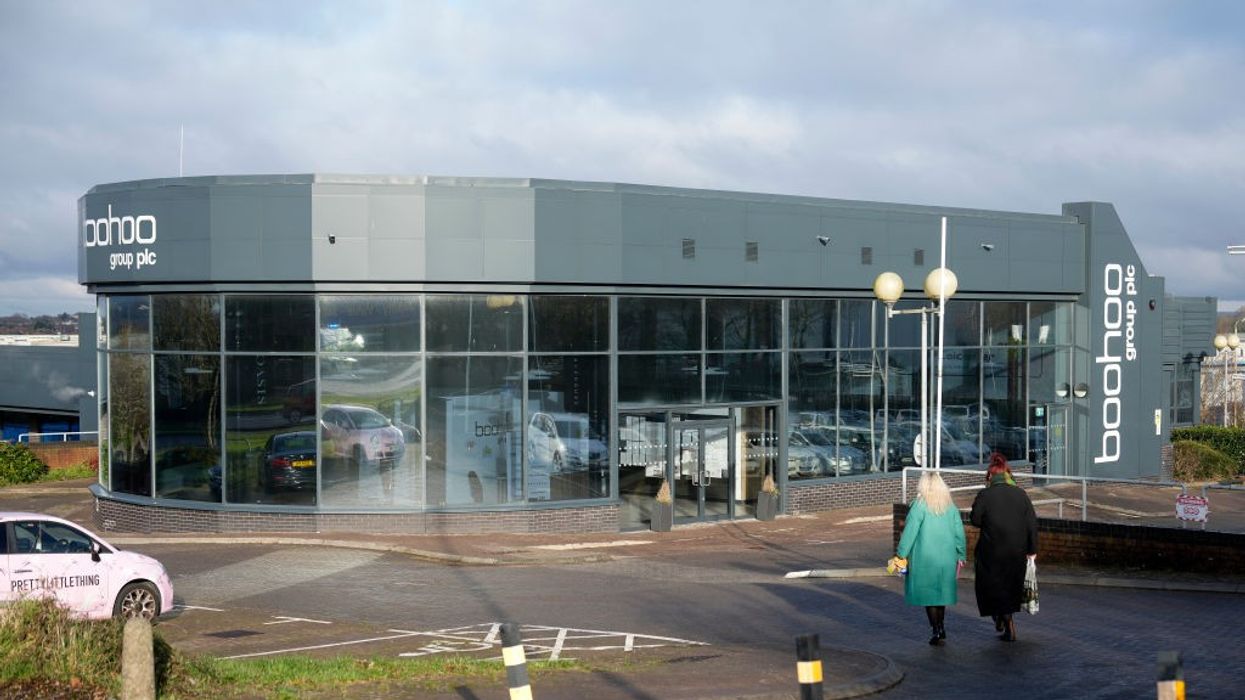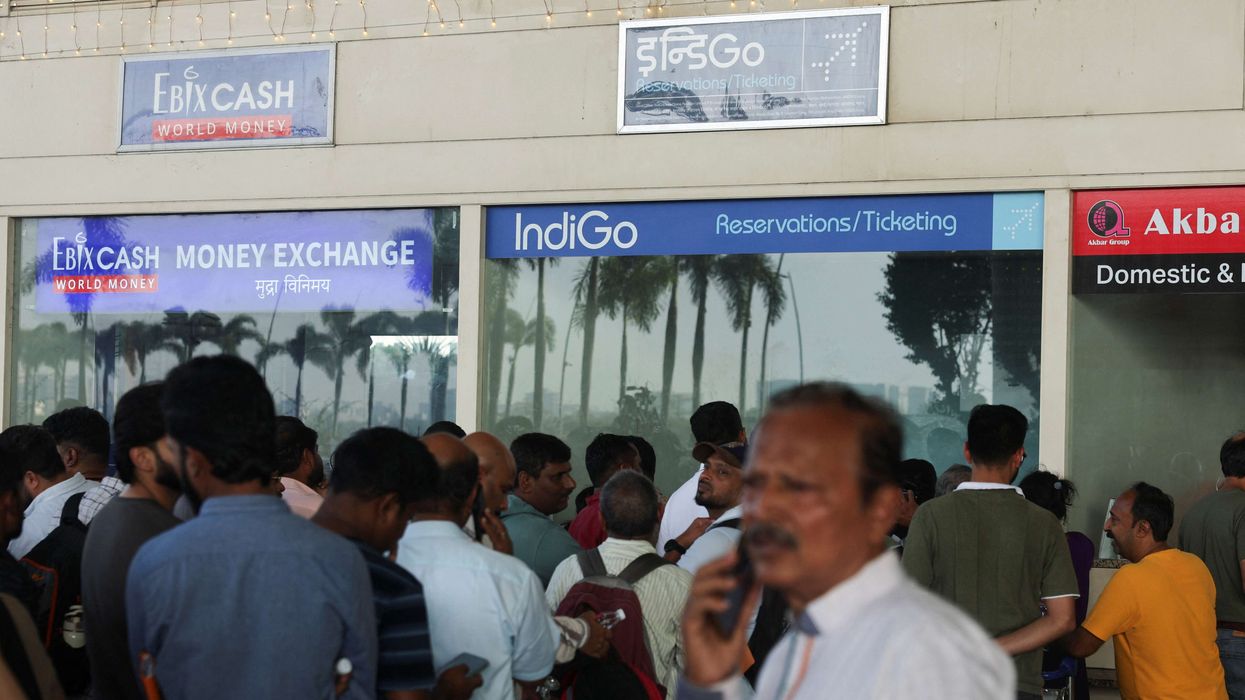AS AIR INDIA turns itself into a “world-class global carrier with an Indian heart” under the leadership of its CEO and managing director, Campbell Wilson, the first group of potential passengers who stand to benefit are Eastern Eye readers.
They frequently travel to India for family gatherings, holidays or work.
But Wilson is also trying to persuade non-Indians to choose Air India over other rival airlines, especially in business class – where it is offering a “Maharaja” service.
He sat down recently at Air India’s brand new headquarters at Gurugram in New Delhi at a briefing session with a small group of journalists from the UK, where Eastern Eye was also present.
The background is that India’s first airline, Tata Air Lines, was launched in 1932. JRD Tata, the first Indian to hold a commercial pilot’s licence, piloted the inaugural flight from Karachi to Bombay.
In 1953, Tata Air Lines was nationalised and renamed Air India. It was privatised and returned to the Tata group in 2022 at the start of a five-year period of transformation called Vihaan.AI – Sanskrit for dawn.
Air India and Vistara, a joint venture between Tata Sons and Singapore Airlines, have been merged to form one airline. Meanwhile, the low-cost carrier, Air India Express, has taken over AIX Connect, previously known as AirAsia India.
At the start of the year, Wilson provided a progress report aimed partly at his 30,000 employees: “The merger of the four Tata airlines into one full-service airline, Air India, and one low-cost carrier, Air India Express, was completed in late 2024.”
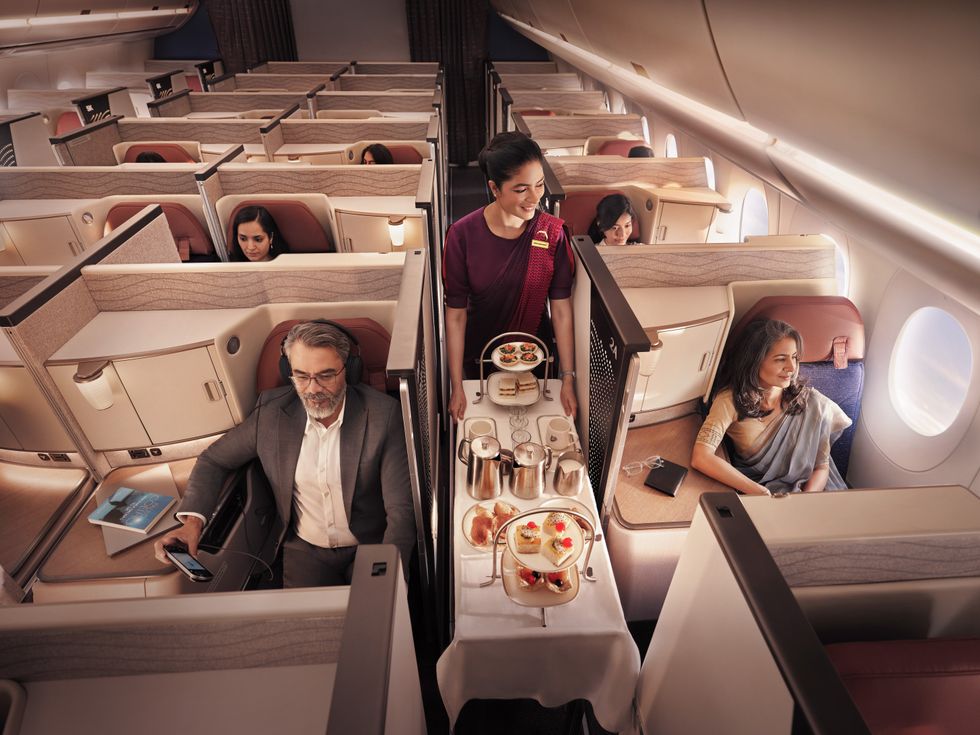
He added: “These mergers and new aircraft deliveries have taken our group fleet to 300 aircraft, allowing us to now expand our reach to over 100 destinations in India and around the world.
“Air India’s global coverage will further increase in the years ahead, not least because of the recent addition of 100 aircraft to our orderbook, augmenting the earlier commitment for 470 made in 2023.
“January 2025 marks the third anniversary of Air India’s return to the Tata group, and the mid-way point of our five-year Vihaan.AI programme.”
He went on: “Air India’s transformation covers every aspect of our business, and involves significant upgradation of systems, processes, infrastructure, equipment, and people. Interior refit of the singleaisle fleet, serving domestic and short-haul international destinations, is already well underway, and will be complete by mid-2025.
“More than 9,000 new Air Indians have come aboard and, together with their colleagues, have undergone completely redesigned service training programmes at Air India’s newly-opened training facility in Gurugram which, at 800,000 square feet, is south Asia’s largest.
“More than 100 new aircraft have been deployed, including India’s first Airbus A350 aircraft now flying from Delhi to London and New York.
“Air India has covered a lot of ground in the period since privatisation – we acknowledge there’s much more to be done. All 30,000 Air Indians are fully committed to improving the quality and consistency of our services, in all areas, so that Air India becomes the world-class airline we all want it to be.”
Turning Air India into a world-class international airline is quite a challenge, especially after decades of under investment when it was under government control. But the Tata Group are pretty confident that in Wilson they have got the right man.
Wilson, 53, is a New Zealander who had built his career over 26 years with Singapore Airlines, widely recognised as one of the best in the world. He was recruited by the Tata group when he was CEO of Scoot, the low-cost subsidiary of Singapore Airlines.
“Air India is at the cusp of an exciting journey to become one of the best airlines in the world, offering world-class products and services with a distinct customer experience that reflects Indian warmth and hospitality,” Wilson said on his appointment. “I am excited to join Air India and Tata colleagues in the mission of realising that ambition.”
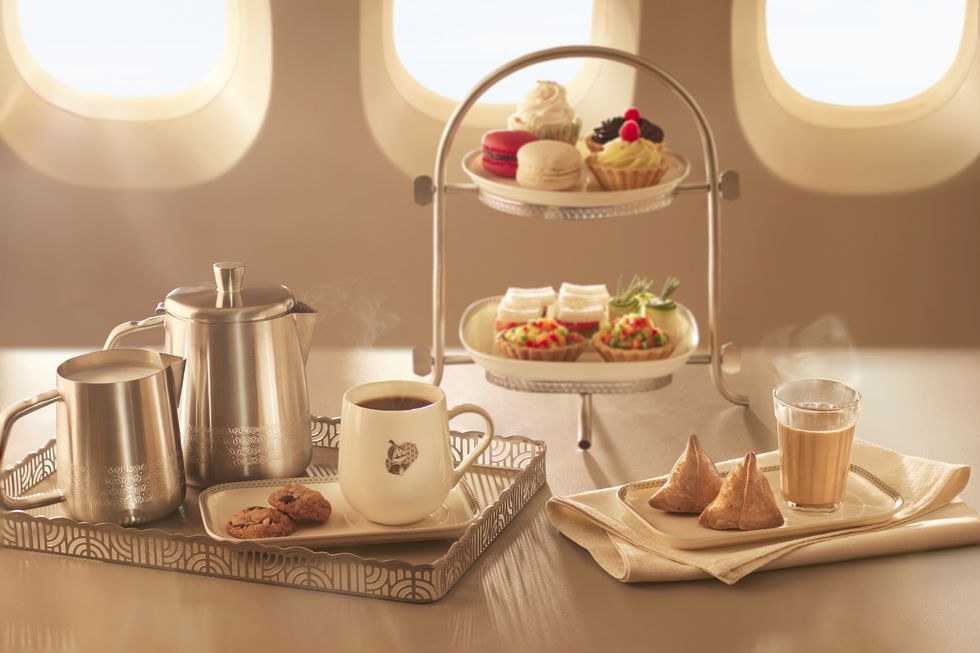
N Chandrasekaran, chairman of the Tata Group and of Air India, described Wilson as “an industry veteran having worked in key global markets cutting across multiple functions. Further, Air India would benefit from his added experience of having built an airline brand in Asia.
“I look forward to working with him in building a worldclass airline.”
On the business class flight from Heathrow to New Delhi on one of Air India’s six new A350 aircraft, the journalists received a personal letter of welcome from Wilson.
It said: “This aircraft is an embodiment of a transforming Air India, delivering a new experience for you and the nearly 120,000 travellers we fly every day.
“I know long flights can be...well, long. So, I wanted to take a couple of moments to point out a few things I particularly hope will help pass the time.
“The champagne we serve on board, Laurent Perrier La Cuvée Brut, is crisp and refreshing – perfect for toasting this journey. I had the pleasure of joining the panel that selected it, and I hope you’ll raise a glass with me to celebrate Air India’s new chapter. Today’s inflight menu includes Scialatielli pasta served with piperade sauce and chargrilled baby courgette, and Kundan Kaliyan – succulent lamb in creamy saffron sauce served with rice, mixed lentils, and mint yogurt, both of which I’ve enjoyed during tastings.
“Look out for the salt and pepper shakers shaped like traditional Indian tiffin boxes – a small detail that adds something special to the dining experience.
“For entertainment, we’ve curated a diverse selection of Indian and international features. You’ll also have access to WiFi on board, so you can stay connected, if you choose.
“And, to help you rest, we’ve introduced luxury bedding, including a premium wool-blend blanket with a jacquard border inspired by Sozni embroidery from Jammu and Kashmir in India, reflecting our blend of Indian heritage and comfort.”
When he met the journalists to brief them in person, Wilson appeared confident he would achieve his aim: “We’ve got two more years, probably, of heavy lifting to get there, but it’s a matter of when, not if.”
Catering to the Indian diaspora is obviously important for Air India. There are now non-stop flights from India to the US, which has an estimated five million people of Indian origin.
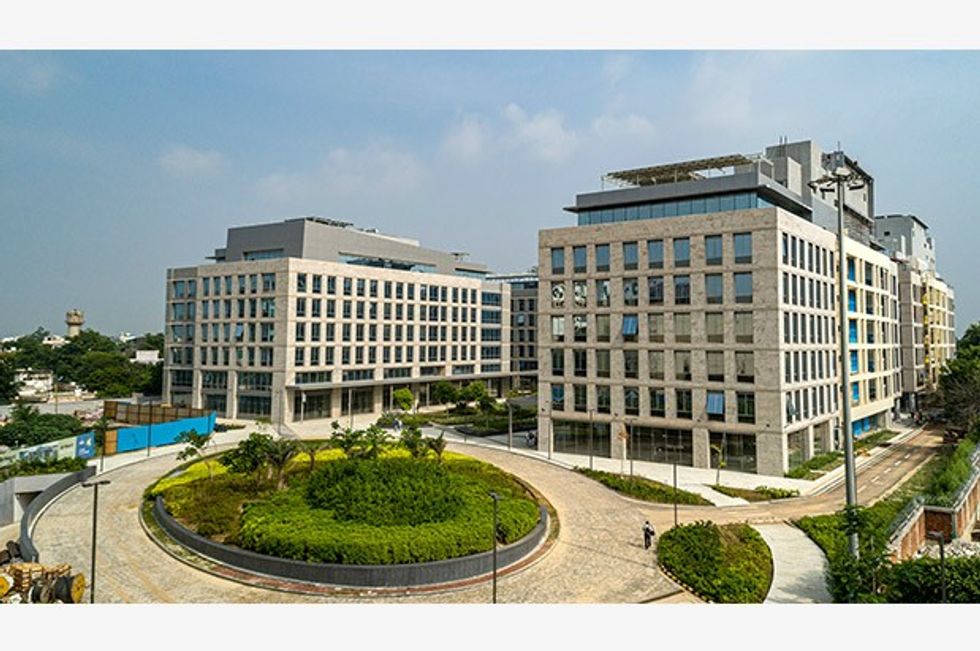
The UK, with 2.5 million people of Indian origin, is its second-most important overseas market.
“We’ve put a lot of new capacity into the UK since privatisation, essentially doubled it if not slightly more,” revealed Wilson. “It’s no coincidence that’s where we’re putting the flagship aircraft (the Airbus A350-900) that we flew on the first two deployments, to Heathrow and New York City.
“It’s only scratching the surface, really, in terms of the opportunity that is present between the two countries. At the moment, we only connect Delhi, Mumbai and Bangalore with Heathrow. We have a number of services from Gatwick to secondary cities (Goa, Ahmedabad, Amritsar, and Kochi). You could probably double the number of city pairs.
“We want to connect more places in India with more places in the UK. We have to balance that with building a hub in Delhi, another hub in Mumbai and potentially a hub in Bangalore to service the different geographies in India. There are 20 million people in Mumbai. There is a huge catchment in southern India. We have ordered 570 aircraft, of which 100 are wide-bodied. We just need them to arrive.
“So, in deploying our aircraft, we have many competing demands, more point-to-point services from secondary places in India and having multiple daily flights to long-haul destinations. As much as I would like to connect many more cities in India with many more cities in the UK, we have to consider that in the context of all the other opportunities.
“Between the UK and India, there is already an open skies agreement. There are constraints in getting slots at Heathrow, but beyond that there are no constraints on operations.
“It’s simply driven by commercial considerations, and those commercial considerations become stronger when there are more business-to-business links, and more people to people links that the FTA (Free Trade Agreement) might facilitate.
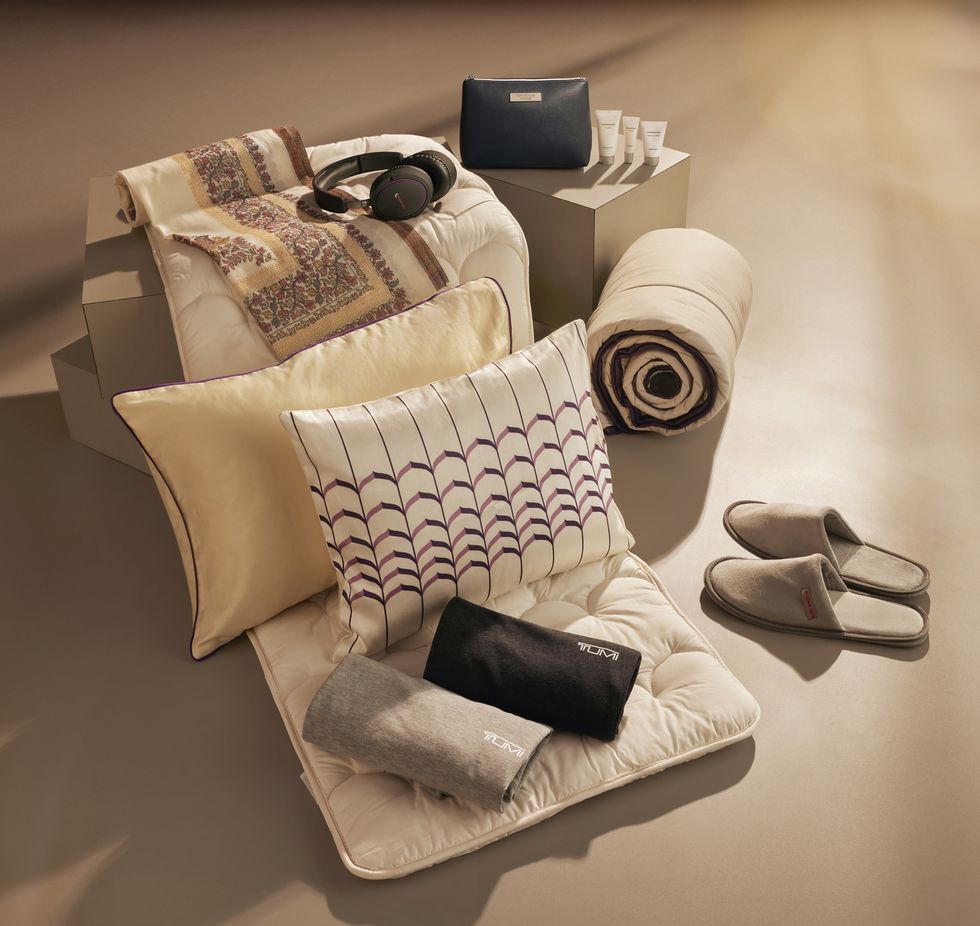
“We are an indirect beneficiary of any improvement in government-to-government or business-tobusiness relationships.”
There are plans to set up Air India’s own lounge at Heathrow, where it is currently in discussions to secure a large space. At the moment, it is using the Star Alliance lounges – shared by Singapore Airlines, Lufthansa and United Airlines.
“Historically, when Air India was governmentowned, it was to serve political as well as economic purposes, whereas the new Air India is a much more normal commercial airline focused on building hubs, taking people to and through India, attracting high-end leisure travellers and people who may not be Indian by nationality or ethnicity.
“People would just be choosing a good airline. So, the focus is on improving the product – first, business and economy – and being really a world-class airline that people choose to fly because it’s good, not because it’s Indian. But if they choose to fly Air India, some of the Indian elements, the warmth, the food, whatever else, would be an added bonus.”
Wilson was asked about the discrepancy in baggage allowance – 20kg for international passengers travelling economy and 15kg on domestic flights within India.
“If you are buying one (through) ticket, we will respect the international baggage allowance on the domestic flight,” he said.
“If you come into India and spend a couple of days in Delhi and then take a domestic flight, say, to Jamshedpur, the domestic allowance would prevail. That’s the same in any country.”
Although Air India had ordered 570 new aircraft, that might not be enough. He couldn’t predict the number Air India would end up with, but said: “Bear in mind with the 570 ordered, the delivery stream is over a number of years. Some are to replace aircraft that are reaching the end of their operational life.”
Wilson said Air India’s transformation was being slowed down by factors outside his control – for example, slow delivery of new aircraft and the lack of new seats.
“My biggest challenge is the harmonisation of the product across the fleet,” he said. “It’s not a challenge that we face on our own, because of the supply chain constraint, whether it’s a delivery of new aircraft or the delivery of seats to refit old aircraft. It’s still gummed up after Covid.
“It’s amazing to think that five years after the start of Covid, the industry is still really struggling. And if you talk to Boeing or Airbus privately, they will tell you that they don’t expect delivery of aircraft to reach their normalcy until about 2029.
“Most of the seat suppliers are still struggling. We intended to start our wide body refit programme of the 777s and the 787s last year. We actually committed $400 million (£300m) to the task. We selected the seats back in 2022, but because of the constraints, both programmes only start in April. You can only do so many aircraft at the same time, because you still have an airline to run. So it will be another two years or so before we can work through the whole fleet upgrade.
“ He emphasised: “India is a growing market. It (the air traffic) is growing by seven per cent to eight per cent a year. In our view it’s grossly underserved by the indigenous air traffic supply. We see the opportunity to grow at double-digit compound annual growth rate for the foreseeable future.
“So, the 570 aircraft, in our view, is a start. If you are looking at similar geographies in China or North America, you are talking aircraft fleets for some of the larger airlines that are nearing 1,000 or even more. That’s not to say that’s what we will have, but the characteristics are similar.”
As of April 2025, the United Airlines fleet consists of 1,020 mainline aircraft, the largest of any airline worldwide. American Airlines operates 985 mainline aircraft. British Airways have 295, Ryanair 568, Singapore Airlines 163, Emirates 260 and easyJet 347.
The frequency of services means it is now commonplace for people to do a daily commute between, say, Mumbai and Delhi. Air India carries around 120,000 people a day. Such is the demand, that domestic flights go full.
“Between Delhi and Mumbai there is a flight nearly every half hour,” said Wilson.
There was a time when a bowing Maharaja, in a turban and with an extravagant moustache, was very much the symbol of Air India. The figure has returned, but the symbol has been modernised. He no longer bows so much. In business class, there is a discreet Maharaja on the tea cup, for example.
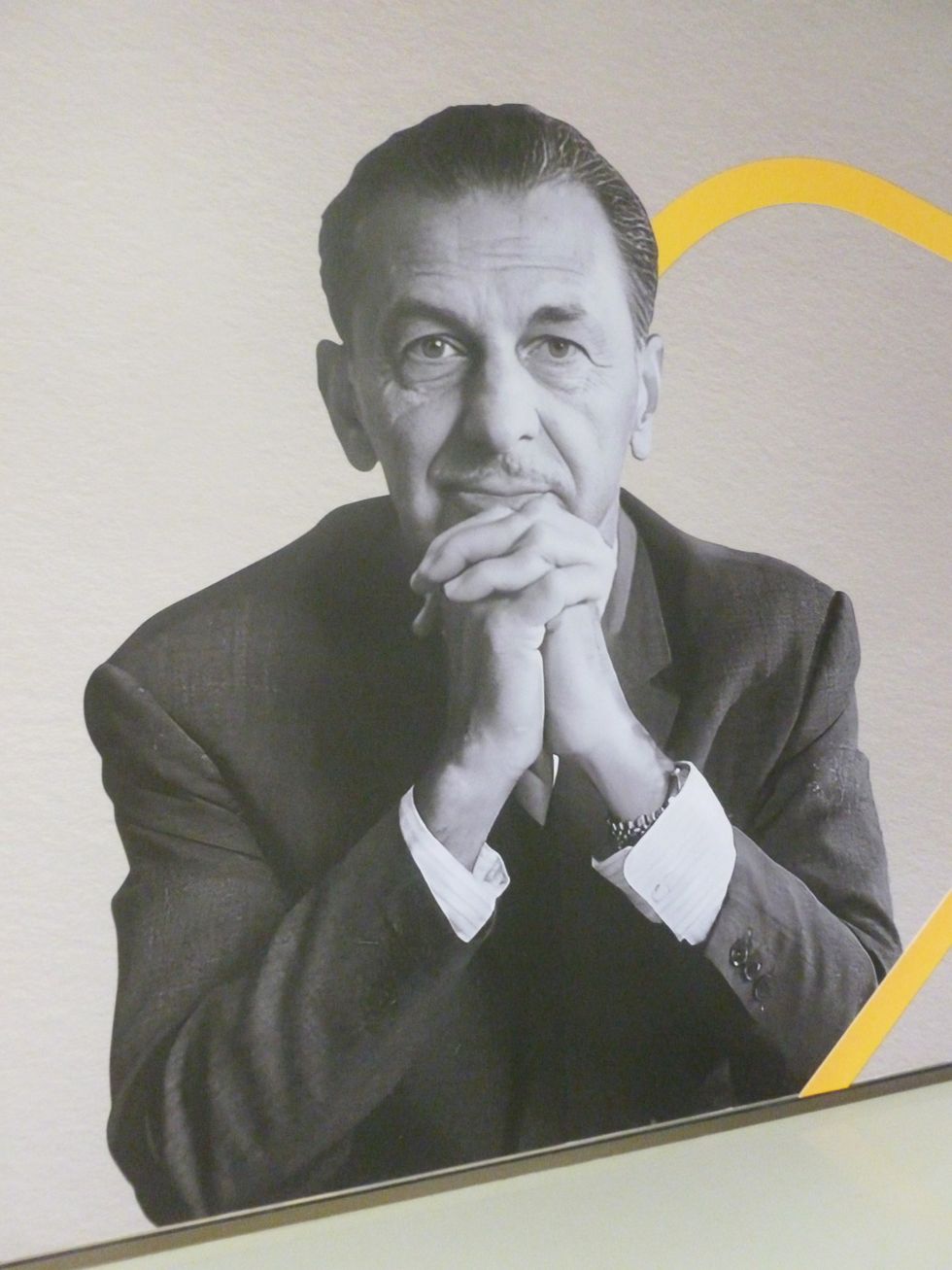
Wilson commented on the reincarnation of the Maharaja: “There is the physical or pictorial manifestation of the Maharaja, which we have moved back from because of its social status and because of the way it might be perceived, particularly outside. But it’s beloved in India.
“We are trying to take the philosophy of the Maharaja, which is hospitality, service, warmth, all those things, and build it into the culture of the airline, particularly the frontline service culture. We use the pictorial representation on glassware or the plates. So it’s an evolution rather than front and centre like Mickey Mouse. That’s not, in our view, modern, international, world-class, five-star imagery.”
Wilson, who is trying to build a corporate culture, is not a great fan of WFH (work from home) of the kind that has become commonplace in the UK.
“It is not really even a topic for discussion,” he declared, dismissively. “I’ve not heard any sort of chatter or foaming about it. People just expect to be working from an office in a time of transformation like this. From a company’s perspective, we absolutely want people to be working from the office, because when you’re trying to triage and align and merge and inspire and collaborate, remote work just doesn’t (cut it). I’ve been very clear that even if the request came, I wouldn’t be supportive of it.”
There is the mystery of why he had taken on the Air India job when he could have had a quieter and more comfortable life at Singapore Airlines.
He said he had worked for the airline for 26 years and “Singapore Airlines is a fantastic airline and Singapore is a fantastic country, but stuff just happens and that can be a bit frustrating”.
His mission appeared to be to return Air India to its glory days: “You’re not quite sure of the extent to which you are making a difference versus the system just doing its job and you are enjoying the system.
“On the other hand, those of us in the industry for a while knew of the legacy of Air India and that it had been this wonderful airline. JRD Tata had been a Francophile and had built an airline that was very international in its mindset and was well regarded by pretty much everyone in the industry.
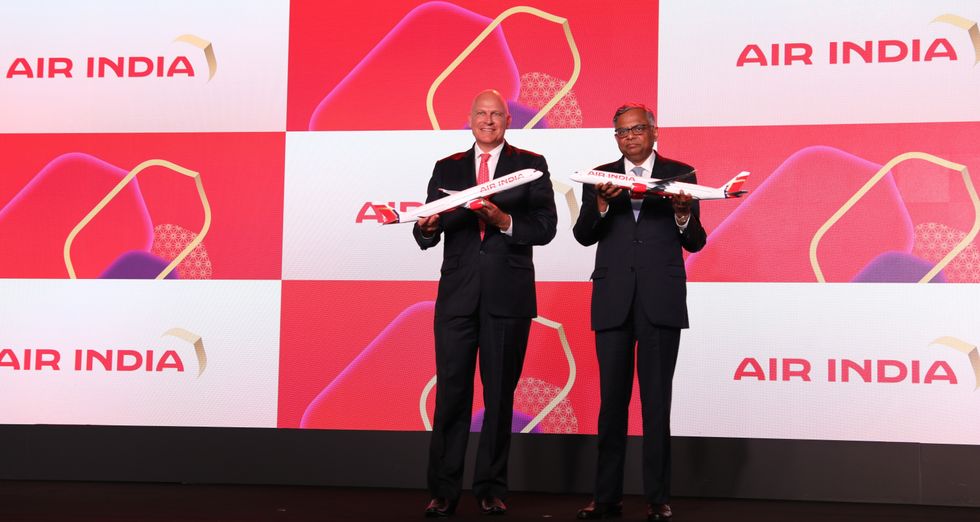
“And for reasons that we know, it descended (under government control) into a little bit of an embarrassment. So, when Air India was privatised, we had this opportunity to come and contribute to the restoration of Air India.
“There’s not really a more interesting and exciting challenge on the planet for someone in aviation. If we look back nearly three years and see what was versus what now is – let alone what is to come – there is an immense sense of satisfaction from all of us here. We’re on the path of something meaningful.”

